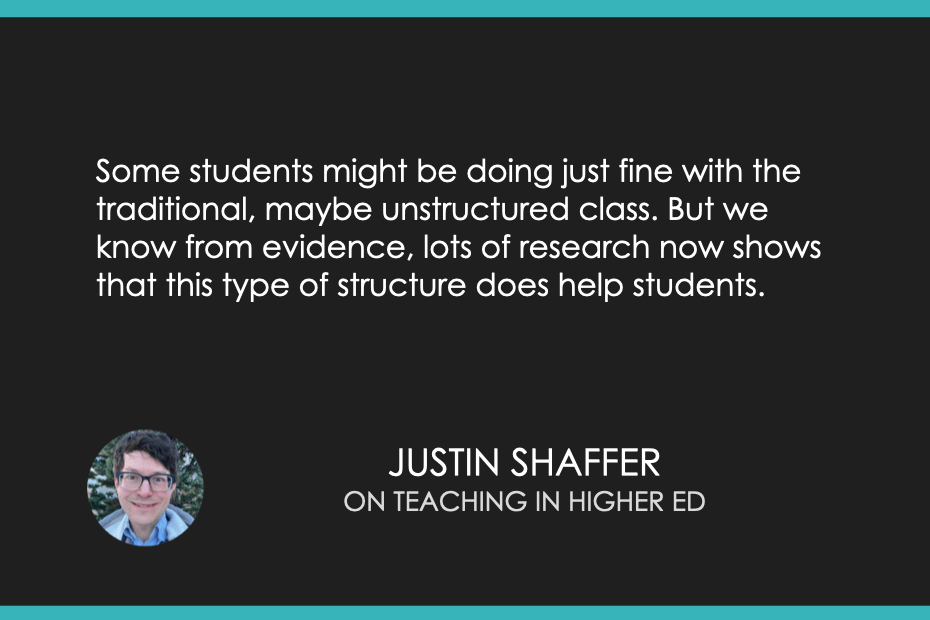
 Teaching in Higher Ed
Teaching in Higher Ed How to Use High Structure Course Design to Heighten Learning
12 snips
Feb 22, 2024 Learn how high structure course design can enhance student learning in STEM courses with insights from Justin Shaffer. Explore the evolution of structured classes, strategies for student engagement, flexible course design, and alternative grading methods. Plus, get tech updates and exciting hints about future collaborations in this informative episode.
Chapters
Transcript
Episode notes
1 2 3 4 5 6
Introduction
00:00 • 2min
Evolution of High-Structured Classes in Education
01:45 • 12min
Enhancing Course Design for Student Engagement
13:45 • 20min
Exploring Flexible Course Design and Alternative Grading Methods in Education
33:43 • 4min
Tech Updates and Product Recommendations
37:35 • 7min
Guest Interview and Future Collaboration Teasers
44:25 • 2min

